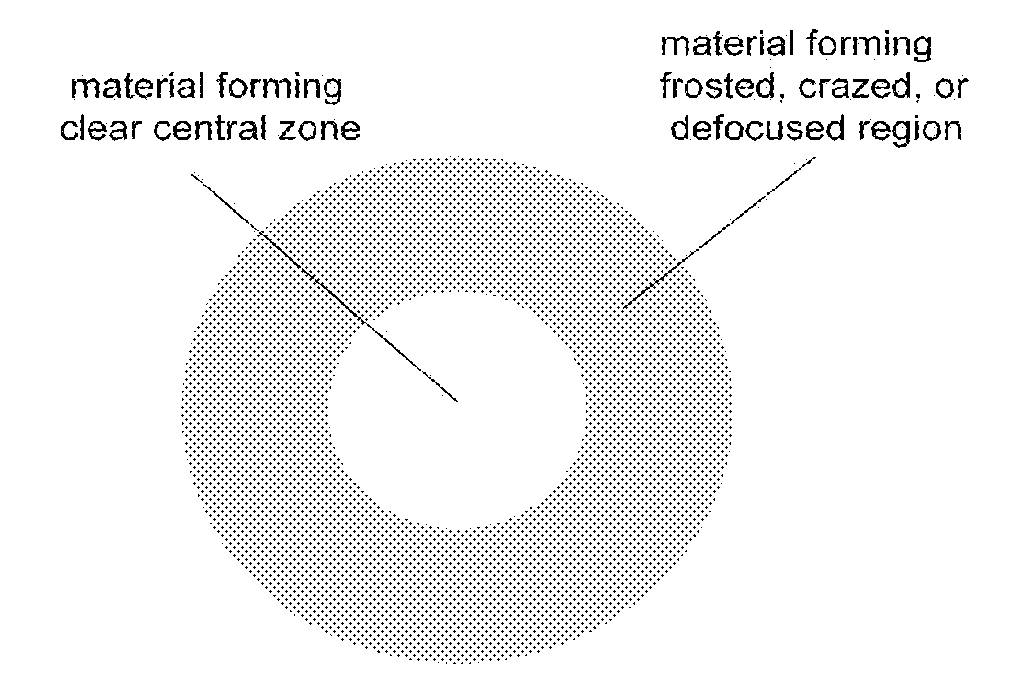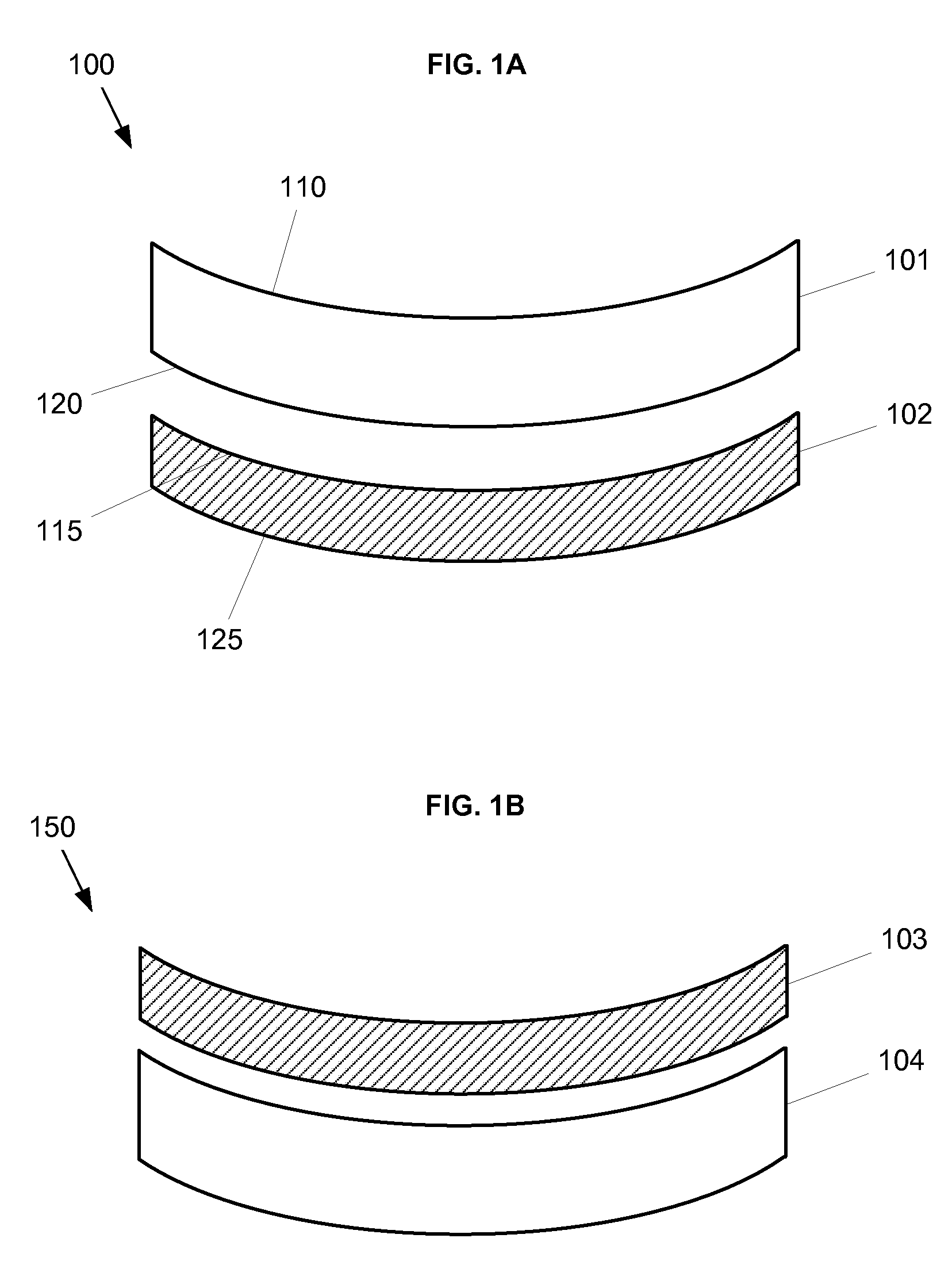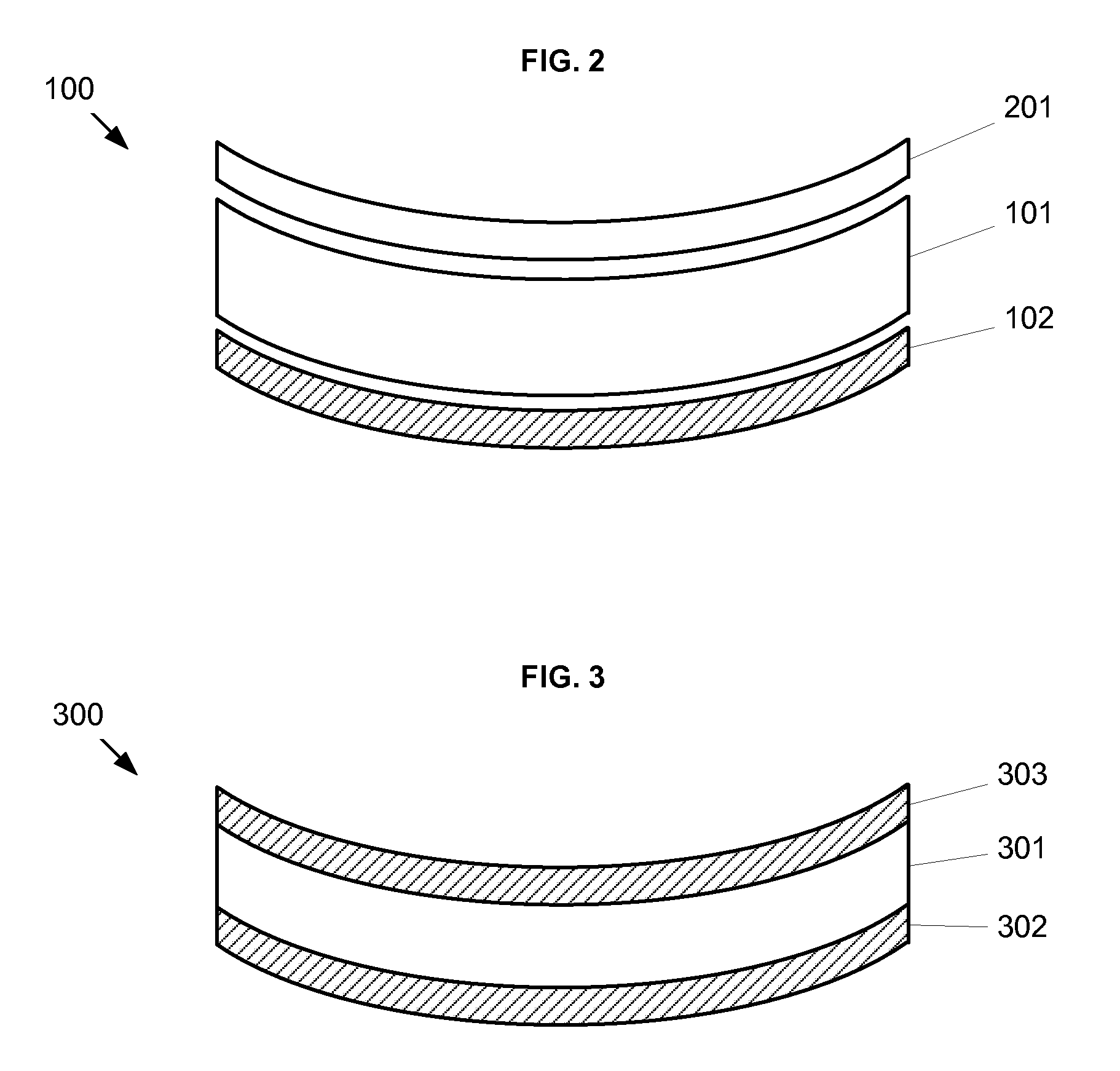High performance corneal inlay
a corneal inlay, high-performance technology, applied in the field of high-performance corneal inlay, can solve the problems of optical degradation of the lens or cataract, the greatest hazard of shorter wavelengths, and the greatest hazard of exposure to these wavelengths
- Summary
- Abstract
- Description
- Claims
- Application Information
AI Technical Summary
Problems solved by technology
Method used
Image
Examples
example 1
[0220]A polycarbonate lens having an integral film with varying concentrations of blue-blocking dye was fabricated and the transmission spectrum of each lens was measured as shown in FIG. 45. Perylene concentrations of 35, 15, 7.6, and 3.8 ppm (weight basis) at a lens thickness of 2.2 mm were used. Various metrics calculated for each lens are shown in Table IV, with references corresponding to the reference numerals in FIG. 45. Since the selective absorbance of light depends primarily on the product of the dye concentration and coating thickness according to Beer's law, it is believed that comparable results are achievable using a hard coat and / or primer coat in conjunction with or instead of a film.
TABLE IVPhoto-CircadiantoxicityPhotopicScotopicRatioRatioLensRef.Ratio (Vλ)Ratio (V′λ)(M′λ)(Bλ)Unfiltered light100.0%100.0%100.0%100.0%(no lens)Polycarbonate Lens451087.5%87.1%74.2%85.5%(no dye)3.8 ppm (2.2 mm)452088.6%86.9%71.0%78.8%7.6 ppm (2.2 mm)453087.0%84.1%65.9%71.1% 15 ppm (2.2 m...
example 2
[0225]Nine patients were tested for contrast sensitivity using dye concentrations of 1× and 2× against a clear filter as a control. 7 of the 9 patients showed overall improved contrast sensitivity according to the Functional Acuity Contrast Test (FACT). See Table VI:
TABLE VIContrast sensitivity test for dye samples with loadings of X and 2X. Test was done February, 2007 at Vision Associaates in Havre de Grace, Maryland by Dr. Andy Ishak.The test consisted of 10 patients, each tested with two filters, using the FACT contrast sensitivity testing processComments:1 Patient number 8 data was dropped. This patient was a 60 yr old, diabetic, with cataracts2 Patient 10 was tested in one eye only3 The terms dotted and solid refer to the two eyes of the patients, how they were shown on test result forms4 The headings “NO”, refer to lenses with clear filter, ie control. The terms Lt and Dk refer to the dye loading in the tested filters.5 For each patient, the top line is their actual score. Se...
PUM
 Login to View More
Login to View More Abstract
Description
Claims
Application Information
 Login to View More
Login to View More - R&D
- Intellectual Property
- Life Sciences
- Materials
- Tech Scout
- Unparalleled Data Quality
- Higher Quality Content
- 60% Fewer Hallucinations
Browse by: Latest US Patents, China's latest patents, Technical Efficacy Thesaurus, Application Domain, Technology Topic, Popular Technical Reports.
© 2025 PatSnap. All rights reserved.Legal|Privacy policy|Modern Slavery Act Transparency Statement|Sitemap|About US| Contact US: help@patsnap.com



